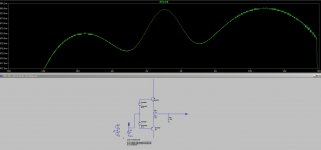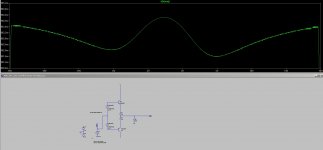I tried to run wingspread simulations to compare the gain curve of two different spice models. While I expected to see differences in the gain distribution the almost opposite direction of the slope and the depth of the waviness of the curve surprised me a bit.
On-semi spice models

Cordell spice models

I believe that Bob Cordell's models can be trusted, although the smaller and more rippled gain on the npn side is somewhat counterintuitive. On the other hand, I have read about the problems the factory on_semi models cause with ac analysis and the difference in the dc transfer of the two transistors is glaring here. And this is where doubts arise about the accuracy of other available models. I've just started exploring the simulation world from so-called 'kitchen side' and I can't quite verify how the code matches up to reality. Can the stock LTspice library be trusted and which manufacturer's resources should be avoided?
On-semi spice models

Cordell spice models

I believe that Bob Cordell's models can be trusted, although the smaller and more rippled gain on the npn side is somewhat counterintuitive. On the other hand, I have read about the problems the factory on_semi models cause with ac analysis and the difference in the dc transfer of the two transistors is glaring here. And this is where doubts arise about the accuracy of other available models. I've just started exploring the simulation world from so-called 'kitchen side' and I can't quite verify how the code matches up to reality. Can the stock LTspice library be trusted and which manufacturer's resources should be avoided?

I've copied your post to the main LT thread where you should get more replies 🙂
Installing and using LTspice IV (now including LTXVII). From beginner to advanced.
- Status
- Not open for further replies.